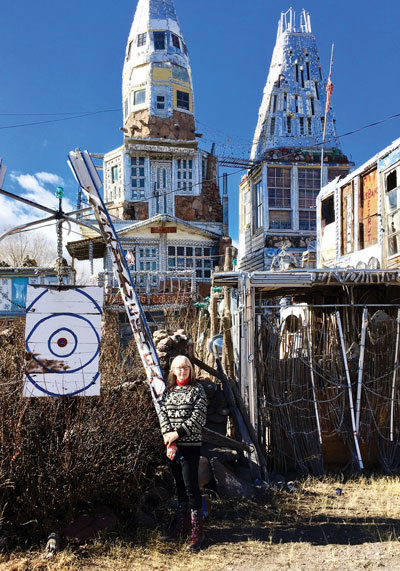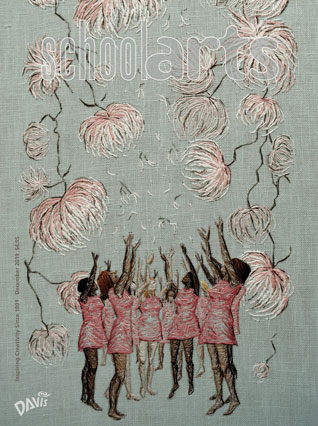 |
| Nancy at self-taught artist Dominic “Cano” Espinoza’s Cano’s Castle in Antonito, Colorado, which is certainly an example of the theory of loose parts. |
When Fröebel opened his first kindergarten in Germany in 1837, he introduced a set of deceptively simple educational play materials, which were meant to be given to young children in an increasingly complex order. These became known as Fröebel’s Gifts. Many were made of wood in different geometric forms (the precursors of today’s wooden blocks), and experimentation with them helped students learn about shape, form, structure, and color.
According to the Fröebel Gifts website (froebelgifts. com), rules for play with the gifts include: (1) they can be returned to their original form; (2) all parts must be incorporated; and (3) a creation is always changed through modification, not destroyed and rebuilt.
The Fröebel Gifts remind me of the theory of loose parts from architect Simon Nicholson, the son of sculptor Barbara Hepworth and artist Ben Nicholson. He believed that “loose parts” in an environment empower creativity. Loose parts are materials that can be combined, taken apart, or put back together in multiple ways. These ideas are also central to Reggio Emilia early childhood practices, playbased art education, and choice-based art education.
All of these approaches involve experiences with structure. Working with three-dimensional materials from an early age gives students a greater understanding of spatial perceptions and may develop their interests and abilities in ways different than working in two dimensions. And it happens to be fun!
If you would like to learn more about Fröebel’s Gifts, I highly recommend reading Norman Brosterman’s Inventing Kindergarten, a book on the history of kindergarten and its influence on the development of modern architecture and abstract art.
View this article in the digital edition.



